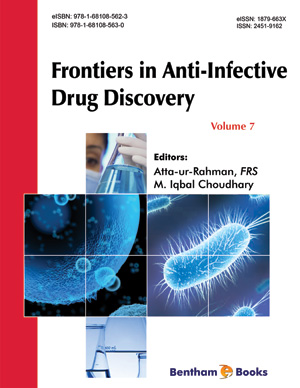Abstract
SHS investigation development is considered from the geographical and historical viewpoint. 3 stages are described. Within Stage 1 the work was carried out in the Department of the Institute of Chemical Physics in Chernogolovka where the scientific discovery had been made. At Stage 2 the interest to SHS arose in different cities and towns of the former USSR. Within Stage 3 SHS entered the international scene. Now SHS processes and products are being studied in more than 50 countries.
Abstract
Projects on design and discovery of antibacterial compounds are at present one of the main research lines in academia and to the lesser extent in pharmaceutical industry. Application of computer-aided drug design (CADD) techniques to drug discovery approaches may lead to a reduction of up to 50% in the cost of drug design. Effective drug design is facilitated when the 3D structure of a drug target is known from experimental or molecular modeling studies (e.g. from homology modelling). Nowadays, diverse techniques of molecular docking and molecular dynamics (MD) constitute important computational tools to study drug-protein interactions at the molecular level. Ligand-based and receptor-based methods of virtual screening are becoming more and more powerful for identification of potential hits. It should be stressed, however, that the main issue with target-based automated HTS approaches as well as virtual screening methods is the fact that identified substances although active on the target, are frequently ineffective in the host. In this chapter we present successes and challenges of molecular modelling techniques as applied to antibacterial drugs. The covered techniques are: homology modeling, molecular docking (including virtual screening), molecular dynamics, quantitative structure-activity relationship (QSAR), pharmacophore models. In spite of the successes, there are specific problems and challenges connected with application of CADD to antibacterial drug discovery. CADD techniques enable to design the compound active on a given target, often without considerations if a molecule is able to reach the target. It is thus needed to develop rules for effective bacterial penetration to be used for filtering compound libraries instead of Lipinski’s filters. Next, CADD methods are capable to address only partially the problem of antibiotic resistance. However, progress in in silico pharmacology and toxicology allows to design safer molecules which is important for antibacterial drugs used in relatively high concentrations.In summary, the importance of CADD techniques in academia and industry for discovery of novel antibacterial compounds cannot be overestimated. Although experimental verification of computational results is still required, these methods limit significantly the number of necessary experiments.
Keywords:
Antibacterial drugs, Homology modelling, Molecular docking, Molecular dynamics, Pharmacophore models, QSAR, Virtual screening.
Recommended Chapters
We recommend

Authors:Bentham Science Books






